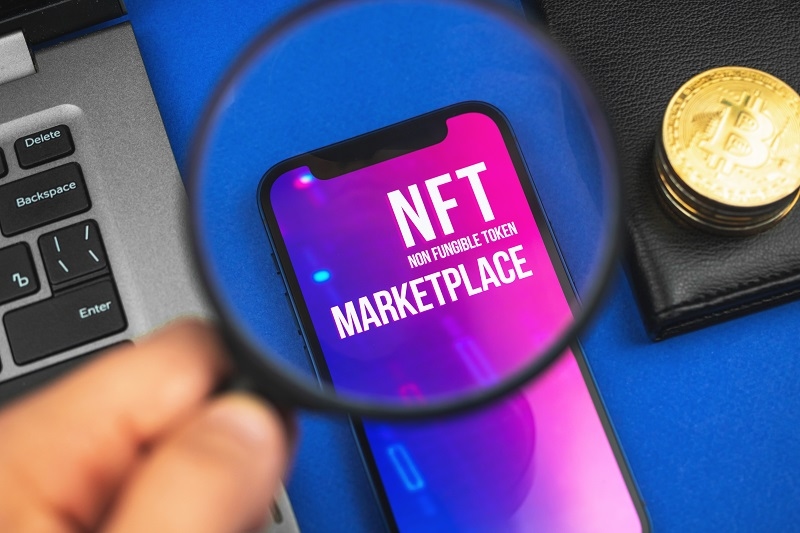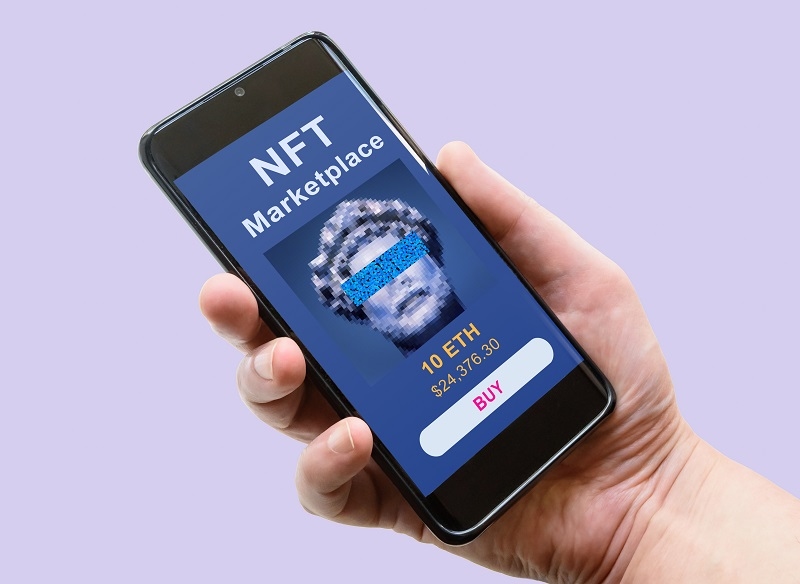
One question that still confuses people is ‘what is an NFT art marketplace and how it has changed the way people value digital art?’ It is a platform of freedom for artists and collectors. It acts as a gateway to rare digital ownership and in the middle of it all stands a new form of economy that is known as the NFT marketplace for art.
Whether you are an artist looking to sell your art or a collector searching for a meaningful investment, understanding the NFT market is crucial. The art marketplace NFT structure is not just a trend but it is reshaping the idea of digital authenticity and art collection in real time.
The days when artwork were just presented in physical galleries and were protected by glass frames are gone because of the NFT marketplace for art.
The digital art is stored on the blockchain and secured with ownership rights that are verifiable and transferable.
In the NFT art marketplace, you as an artist can upload your digital creations like an illustration, animation, photography, or 3D models. These pieces are then minted into NFTs which turns them into unique and non-fungible tokens that can be sold or auctioned.
The best thing is every transaction is recorded on the blockchain which makes every sale, every owner, and every price public. You do not even need third-party authentication because the ownership is coded and not claimed.
While the artwork may be front and center, the NFT art marketplace development behind it is what makes the whole structure reliable, scalable, and secure. These marketplaces are built using decentralized technology — often based on Ethereum or other blockchain networks — to handle smart contracts, token standards, and seamless transactions.
Key elements of a strong NFT marketplace for art include:
All of these are powered by precise, complex code. But for the user, the experience remains smooth starting from browsing to buying.
It’s not just about selling a piece of art anymore — it’s about building presence, reputation, and even community. The art marketplace NFT model is evolving rapidly, and those changes are creating new opportunities.
Here are some key trends:
Some platforms now allow collectors to own a piece of a larger artwork.
Built-in smart contracts ensure artists get a percentage every time their work is resold.
Marketplaces are becoming more selective, spotlighting creators with unique value.
More platforms are offering options beyond Ethereum to reduce gas fees.
Artists who pay attention to these shifts will likely gain more traction, exposure, and lasting value from their work.

With so many platforms available, finding the best art NFT marketplace can be overwhelming. The goal isn’t just to pick the one with the most users — it’s about selecting the one that aligns with an artist's vision or a collector’s taste.
When choosing a platform, consider the following:
A strong user base often means better chances of exposure and sales.
Ease of use makes a big difference, especially for those new to NFTs.
Some marketplaces offer free minting; others pass on blockchain fees.
Open marketplaces let anyone join, while curated ones offer exclusivity.
From GIFs to audio visuals, flexibility in format is a plus for creators.
The best art NFT marketplace is the one where creators feel supported and collectors feel confident.
One of the most remarkable aspects of the digital art marketplace NFT model is its ability to connect creators and collectors across borders without physical limitations. A piece of art created in Berlin can be owned by someone in Tokyo, all within minutes, and with full proof of ownership.
For collectors, this opens doors to niche communities, rare drops, and the satisfaction of discovering emerging talent early. For artists, it's a chance to build a global audience without relying on traditional gatekeepers like gallery owners or auction houses.
And because every NFT is verifiable on the blockchain, buyers know what they are getting is one of a kind and not a copy or reproduction.
The term marketplace NFT art may sound technical, but its implications are deeply emotional. Art has always been about meaning, expression, and connection. The NFT marketplace simply gives those same values a digital layer — one that is traceable, transferable, and tamper-proof.
Collectors are no longer limited to physical spaces or traditional frames. They now collect stories, animations, generative algorithms, and interactive visuals. These works can be showcased in virtual galleries, shared on digital wallets, or kept as private treasures.
The point is that the value is not lost just because the canvas is code. In many ways, the value is further elevated.
As blockchain adoption continues, NFT art marketplace development will become more seamless, more affordable, and more intuitive. Artificial intelligence may assist in curating, while augmented reality might allow collectors to view their pieces in real-world spaces with a tap of a screen.
Smart contracts may evolve into more complex agreements that support collaborative artworks, co-ownership, or even dynamic pieces that change over time.
But one thing seems certain that the demand for digital art is not fading because it is gaining ground and the NFT marketplace for art is its foundation.
If you are still thinking what is an NFT art marketplace, it is more than just a digital storefront. It is a living and rapidly evolving space where creativity and technology meet ownership. It is where a JPEG file holds weight and where artists get paid again and again for their creative skills.
The world of marketplace NFT art is still young, but it is already rewriting the rules. And for anyone paying attention, this is the right moment in the digital industry that is worth your attention.
This content was created by AI